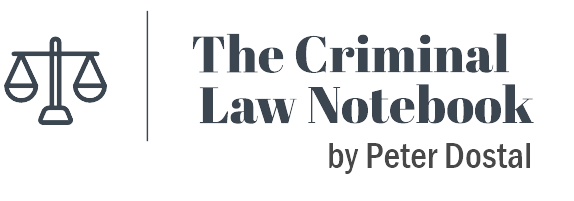Initial Post-Charge Detention
General Principles
Holding a person in custody when it is not prescribed by the provisions of the Criminal Code would be a violation of s. 9 of the Charter.[1]
- ↑ R v Grant, 2009 SCC 32 (CanLII), [2009] 2 SCR 353, per McLachlin CJ and Charron J, at para 54 (“[A] detention not authorized by law is arbitrary and violates s. 9 [of the Charter]”)
Duty to Take Detainee to a Judge
Out of Province Warrantless Arrests
Deeming to Act Lawfully
495 [arrest without warrant by peace officer]
[omitted (1) and (2)]
- Consequences of arrest without warrant
(3) Notwithstanding subsection (2) [public interest exception to arrest power], a peace officer acting under subsection (1) [warrantless arrest power] is deemed to be acting lawfully and in the execution of his duty for the purposes of
- (a) any proceedings under this or any other Act of Parliament; and
- (b) any other proceedings, unless in any such proceedings it is alleged and established by the person making the allegation that the peace officer did not comply with the requirements of subsection (2) [public interest exception to arrest power].
R.S., 1985, c. C-46, s. 495; R.S., 1985, c. 27 (1st Supp.), s. 75.
[annotation(s) added]
498 [release by peace officer (warrantless arrest)]
[omitted (1), (1.01), (1.1) and (2)]
- Consequences of non-release
(3) A peace officer who has arrested a person without a warrant, or who has been given the custody of a person arrested without a warrant, for an offence described in subsection (1) [release from custody – arrest without warrant], and who does not release the person from custody as soon as practicable in the manner described in that subsection shall be deemed to be acting lawfully and in the execution of the officer’s duty for the purposes of
- (a) any proceedings under this or any other Act of Parliament; or
- (b) any other proceedings, unless in any such proceedings it is alleged and established by the person making the allegation that the peace officer did not comply with the requirements of subsection (1) [release from custody – arrest without warrant].
R.S., 1985, c. C-46, s. 498; R.S., 1985, c. 27 (1st Supp.), s. 186; 1997, c. 18, s. 52; 1998, c. 7, s. 2; 1999, c. 25, ss. 4, 30(Preamble); 2019, c. 25, s. 213.
[annotation(s) added]
503 [taking person before justice after arrest]
[omitted (1), (1.1), (2), (2.1), (2.2), (2.3), (3), (3.1) and (4)]
- Consequences of non-release
(5) Despite subsection (4) [release of person about to commit indictable offence], a peace officer having the custody of a person referred to in that subsection who does not release the person before the expiry of the time prescribed in paragraph (1)(a) [bring detainee to justice – if justice available] or (b) [bring detainee to justice – if justice not available] for taking the person before the justice shall be deemed to be acting lawfully and in the execution of the peace officer’s duty for the purposes of
- (a) any proceedings under this or any other Act of Parliament; or
- (b) any other proceedings, unless in those proceedings it is alleged and established by the person making the allegation that the peace officer did not comply with the requirements of subsection (4) [release of person about to commit indictable offence].
R.S., 1985, c. C-46, s. 503; R.S., 1985, c. 27 (1st Supp.), s. 77; 1994, c. 44, s. 42; 1997, c. 18, s. 55; 1998, c. 7, s. 3; 1999, c. 25, s. 7(Preamble); 2019, c. 25, s. 217.
[annotation(s) added]
Section 495(3) should be construed to deny any defence for failure to comply with 495(2).[1]
Notably there is no similar deeming provision in relation to the obligations under s. 503 which requires the accused to be brought to a justice.
- ↑ R v Adams, 1972 CanLII 867 (SK CA), per Culliton CJ
